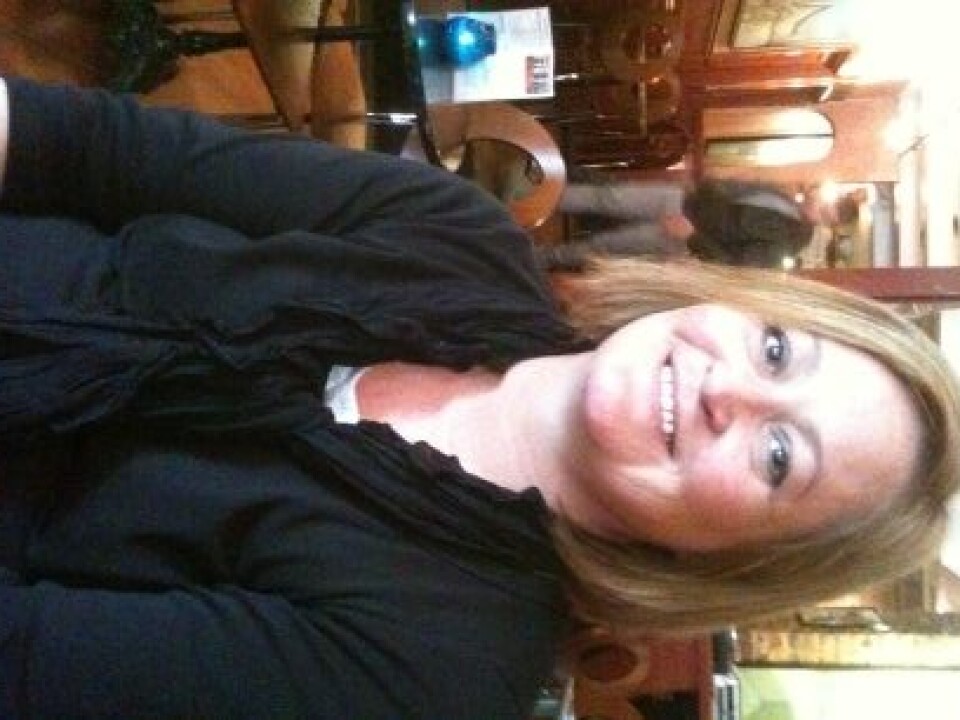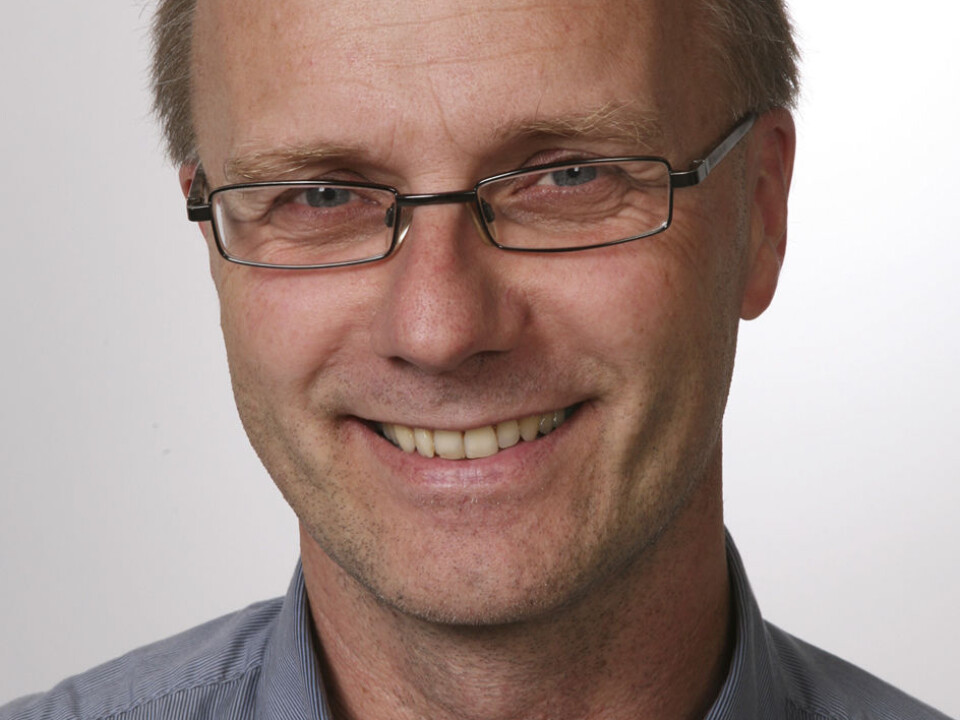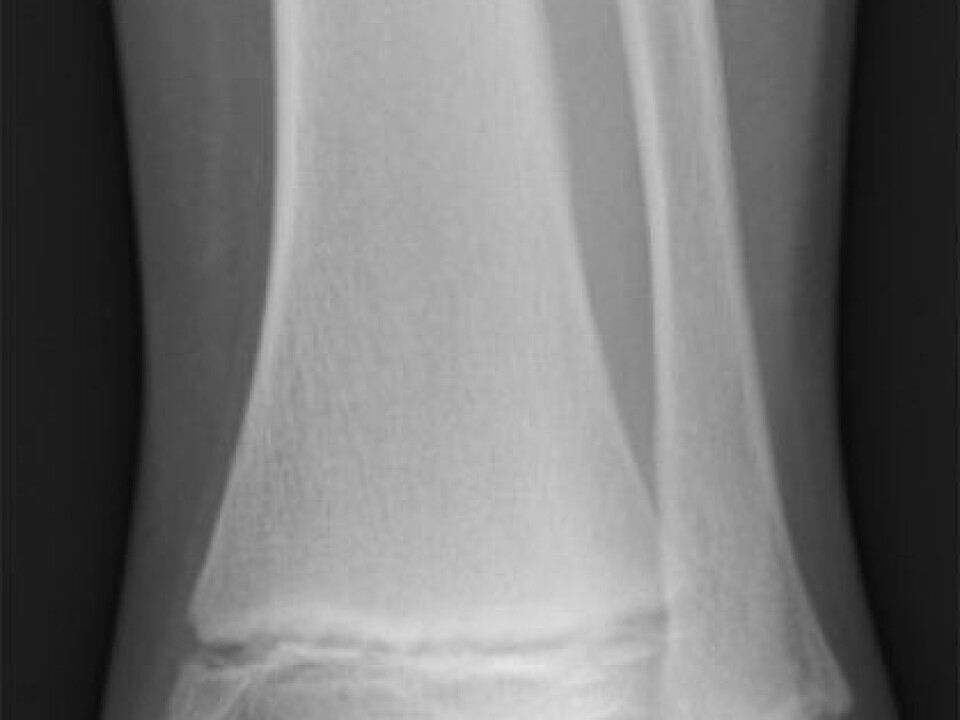
Height as an infliction
Several hundred Norwegian girls were treated with oestrogen in their childhood to keep them from growing too tall. Nobody has studied what happened to them as adults.
Denne artikkelen er over ti år gammel og kan inneholde utdatert informasjon.
When Kristin Espestøyl (44) was nine years old, her mother took her to the doctor to check how tall she could expect to become.
“I was a lot taller than all the others, I shot up like a bamboo plant pretty early, and I remember thinking I was unlucky to be so tall,” she says.
X-rays were taken of Espestøyl and she was examined by doctors in her local town as well as the national Rikshospitalet University Hospital in Oslo. They predicted that she would reach a height of 187 cm.
This is tall for a girl, even in 2011, and in the 1970s the doctors said that treatment with growth-stunting hormones could be a good idea.

“Afterwards I’ve had a few problems, some of which have nothing to do with the treatment, but I’ve started to wonder whether there could be a connection,” says Espestøyl.
Immediate side-effects
Treatment of tall girls started in the USA in the 1950s after it was discovered that high doses of the hormone oestrogen could reduce the growth of young girls.
At that time professions such as for instance flight attendants operated with maximum heights and it was generally felt that tall girls would have trouble finding husbands.

Since then thousands of young girls have been treated with growth-suppressing hormones, oestrogen or oestrogen-like substances that halts growth of girls in pre-puberty.
Espestøyl was one of them. From age 11 to 14 she took one pill a day, which contained about three times as much oestrogen as a common contraceptive pill. She started to feel the side-effects almost immediately:
“I gained a lot of weight and had a strong need of sweets. And when I say strong I mean very strong. It was like a kind of dependency, as with tobacco or alcohol or whatever. Fortunately I was an active swimmer at the time, or I would have become terribly fat,” she says.
In addition to the sweet tooth and weight gain, Espestøyl says her nipples changed colour and became nearly black. This wasn’t so fun for a girl who was often in the public showers of the swimming hall, she recalls.

Changed Behaviour
However, the most debilitating changes Espestøyl experienced where psychological.
“My personality changed and I started stealing and lying. These were things that I had no tendencies toward before – I had been dutiful and terribly afraid of doing anything wrong,” she says.
As an example Espestøyl says she skipped school once to stay home and bake a marble cake.

“Absurd things like that were totally out of character. My mother was a teacher, and strict, and I had never dared to do anything like that before,” she says.
Similar experiences worldwide
Several hundred girls – nobody knows quite how many – have been given the same treatment in Norway, but so far no follow-up studies have been made to see what happened to them.
But results from abroad have not been particularly reassuring.

In the book Normal at any cost: Tall girls, short boys and the medical industry’s quest to manipulate height, Susan Cohen and Christine Cosgrove write that several of the women they interviewed remember weight gain, depression and swings of mood as some of the side-effects of the treatment – the same as Espestøyl.
A study among adult Australian women who had been treated as children was published in The Lancet in 2004. It lists possible short-term side-effects: irregular menstruation, weight gain, nausea, darker nipples, night cramps, aching arms and legs, leakage from breasts, excessive vaginal discharges, ovarian cysts and blood clots.
In Cohen and Cosgrove’s book a Norwegian study is mentioned. Olav Trygstad, a gynaecologist at Rikshospitalet University Hospital, studied the short-term effects of the treatment in 1986.
Eleven of the 680 girls who were examined then had started having problems with breast leakage, medically known as galactorrhea. No other side-effects were mentioned.
Breast cancer and reduced fertility
The main objective of the study in The Lancet was to see whether the growth-suppressing hormones affected fertility. This was one of the first studies dealing with the issue, around 50 years after such hormone treatment started.
The study indicates that women who were given such treatment are less fertile.
After attempting to conceive for a year, these women were more likely than average to have failed, and they were more prone to have contacted a doctor about troubles getting pregnant. They also had a 40 percent lesser chance of getting pregnant in a random menstruation cycle.
The treatment, especially the earliest methods, has also been linked to breast cancer.
Until around 1970 the girls were treated with the artificial hormone diethylstilbestrol (DES), rather than etinyloestradiol, which is used today. DES was used in the USA, Australia and Europe – and probably also in Norway.
However, in 1971 a study was published showing that women who had been given DES to hinder miscarriages – another use – were more susceptible to breast cancer than other women. The same applied to children of women who were treated with DES, they too were more disposed toward breast cancer.
In the following years doctors stopped prescribing DES, switching to etinyloestradiol, a type of oestrogen.
The general paediatric instructions from the Norwegian Paediatric Association say that the treatment on the long term can give cause to worry about an impact on fertility and a possible disposition for breast cancer.
Still getting requests
“All in all these results show that such treatment can represent an undesired manipulation,” says Pétur B. Júlíusson, head physician at the section for endocrinology and metabolism at the Haukeland University Hospital in Bergen.
He says that the treatment had its heyday in Norway in the 1970s and ’80s.
In 2004 the newspaper Dagsavisen wrote that doctors in Bergen, Trondheim and Tromsø were continually encountering parents – especially mothers – who wondered if they couldn’t decrease the estimated final heights of their daughters.
“It isn’t often that we get requests now from tall girls and their families, but it still occurs,” says Júlíusson.
“We might get from five to ten requests a year here at Haukeland, which is the primary hospital for about a tenth of Norway’s population. So this would roughly indicate 50-100 requests a year nationwide.
Could be followed up in Norway
The use of the treatment has gradually waned since the 1990s.
“Among those who approach us just one, or even none, are treated per year – we only initiate such treatment in very special cases. This is when the final adult heights of the girls are upwards of 185cm and a strong desire for the treatment is expressed,” says Júlíusson.
A group of Swedish researchers, led by Martin Ritzén at the Karolinska Institute, is now conducting a study looking at the link between treatment with growth-suppressing hormones and breast cancer in Sweden.
“No such follow-up studies have been made in Norway, but they have been done in Australia. A study of those who were treated in Norway could be carried out here,” thinks Júlíusson.
Powerful hormone cure maybe not so smart?
Espestøyl wonders today what this hormone cure has done to her.
“I have been plagued by hormones for many years afterwards and they have caused me lots of problems. It’s hard for me to concentrate over longer periods; I get very depressed or short-tempered. It feels like my brain is going to blow sometimes – like having PMS on speed,” she says.
“Now I think, as an adult, that the strong dose of hormones at that age might not have been such a good idea.”
Júlíusson says he has never experienced behavioural changes as a difficult side-effect of the treatment, but points out that changes in temperament commonly occur during puberty in any case.
Height adjustment is plastic endocrinology
As far as height goes the treatment seems to have worked for Espestøyl, who is now “only” 178.5 cm and the shortest person in her family. She is grateful that she didn’t have to live her life as a woman nearly 1.9 metres tall.
“That wouldn’t have been so fun either – you have to be very self assured and have a secure network to avoid being negatively impacted if you are that different from other girls,” she feels.
A study from the same group that assessed fertility rate indicates that the treatment might not have had such a big impact as the worried mothers of the 1970s and ’80s had expected.
A high 99.1 percent of the girls who had been considered for a possible treatment of growth-suppressing hormones, but who were not given them, were happy today about not getting the pills. But 42.1 percent of those who did receive the treatment were now disappointed with the decision.
The study showed that both groups, those who were treated and those who weren’t, had the same chances of entering a relationship as an adult.
“Trying to affect height, whether to become taller or shorter, is on its way out. We physicians are reluctant to treat healthy girls with large doses of hormones. It is a way of stigmatizing naturally tall ones as if they were suffering some sort of malady,” points out Júlíusson.
“You could say it is plastic endocrinology, and that’s not what we became doctors to practice.”
Would never have treated her own daughters
“I am who I am no matter what, I wouldn’t be any different even if it is revealed that others have had the same experiences I did,” says Kristin Espestøyl.
“I’m mainly interested in satisfying my curiosity here – have others experienced the same problems? I don’t know any others who have received the same treatment, so I’m uncertain."
Espestøyl is glad that doctors no longer try to stunt the growth of young girls.
“This is terrific, and we live in a different society now. There seems to be more leeway for being different, it’s almost cool. I would never suggest such a treatment for my own children, that’s for sure.”
Source:
S. Cohen and C. Cosgrove, Normal at any cost: Tall girls, short boys and the medical industry's quest to manipulate height, New York, Penguin Group, 2009
Translated by: Glenn Ostling






























